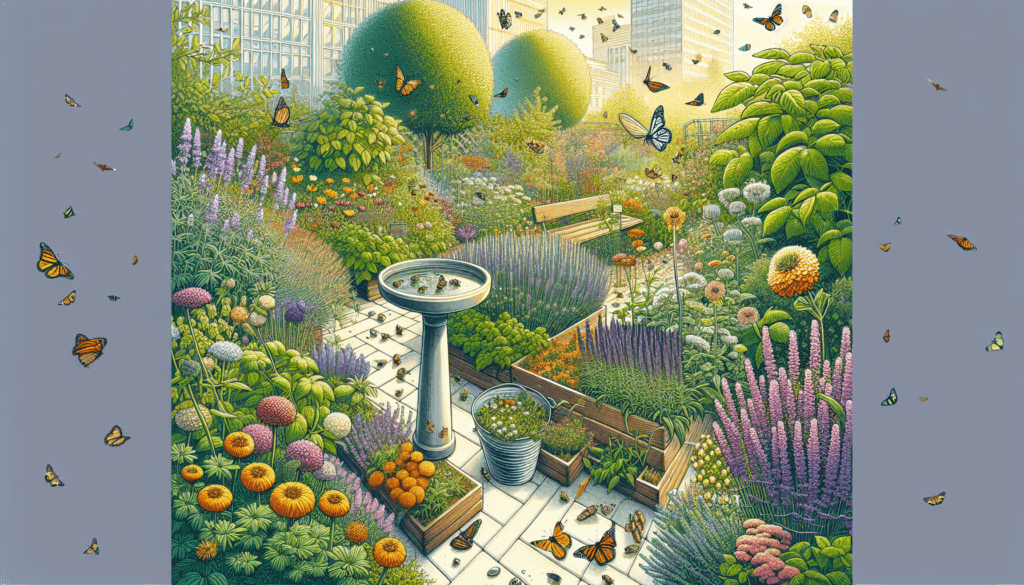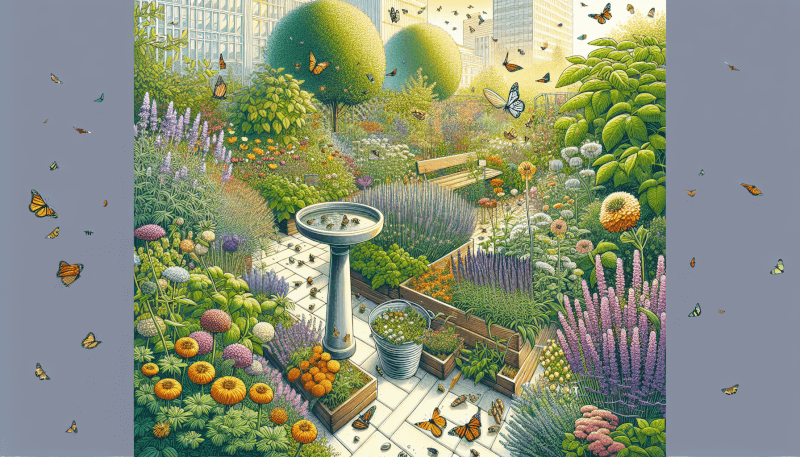In this article, you will discover some straightforward techniques to effortlessly attract beneficial insects to your bustling urban garden. These tiny yet mighty creatures play a crucial role in maintaining a healthy ecosystem by pollinating plants and controlling pests. By implementing a few simple strategies, you can create an inviting habitat that will not only enhance the beauty of your garden but also promote the well-being of these helpful bugs. So, grab a cup of tea, and let’s explore the fascinating world of attracting beneficial insects to your urban oasis!
Creating a diverse plant habitat
Creating a diverse plant habitat is crucial when it comes to attracting beneficial insects to your garden. By choosing a variety of plants, you can create an environment that caters to the needs and preferences of different insects. Consider planting flowers and herbs that are known to attract insects, such as marigolds, lavender, and mint. These plants not only provide food sources for beneficial insects but also add beauty and fragrance to your garden. Additionally, including native plants in your garden is important, as they have evolved alongside local insects and are more likely to attract and support them.
Providing food and water sources
Food and water sources are essential for attracting and sustaining beneficial insects. Planting nectar-rich flowers, such as cosmos, zinnias, and sunflowers, is a great way to provide a food source for butterflies, bees, and other pollinators. Consider setting up bird feeders to attract birds that feed on harmful insects. Installing a water source, such as a shallow dish or birdbath with rocks or pebbles for landing spots, will also help attract beneficial insects that require water for survival.

Using companion planting
Companion planting is a technique that involves pairing plants that attract specific insects to create a mutually beneficial relationship. Certain plants, such as basil and dill, attract insects that feed on common garden pests like aphids and caterpillars. By interplanting these flowers and herbs with your vegetables, you can naturally control pest populations while also attracting beneficial insects. Some beneficial insect-attracting plant combinations include planting tomatoes with marigolds or lettuce with chives.
Avoiding harmful pesticides
One of the most important steps in creating a habitat for beneficial insects is avoiding the use of harmful pesticides. Opt for organic pest control methods, such as introducing beneficial insects or using natural repellents like garlic spray. Avoid systemic pesticides, as they can harm beneficial insects even if they are not directly exposed. By prioritizing natural pest control, you can ensure the health and well-being of the insects you want to attract.

Creating habitat for beneficial insects
To provide a welcoming habitat for beneficial insects, consider building insect hotels. These structures provide shelter for insects such as solitary bees and ladybugs. You can create an insect hotel by using materials like bamboo, logs, and dried leaves. Additionally, creating diversity in your garden by using mulch and rocks can create hiding places and additional habitat for beneficial insects. By leaving some areas of your garden undisturbed, you can provide a safe haven for insects to live, breed, and thrive.
Using pheromone traps
Pheromone traps can be an effective way to monitor and control specific pests in your garden. Start by identifying the target pests you want to control, such as fruit flies or moths. Place traps strategically in your garden to attract and trap these pests. Regularly monitor the traps to determine the level of pest activity and take appropriate measures to control them. It is important to remember that pheromone traps should be used sparingly and as part of an integrated pest management plan.

Attracting ladybugs and lacewings
Ladybugs and lacewings are beneficial insects that feed on aphids, mealybugs, and other garden pests. To attract these insects to your garden, plant flowering plants that they are attracted to, such as daisies and yarrow. Providing habitats for overwintering, such as leaving leaf litter or providing straw or bark mulch, will also encourage ladybugs and lacewings to stay in your garden year-round. Finally, avoid using insecticides that are harmful to these beneficial insects, as it can counteract your efforts in attracting them.
Encouraging bees and butterflies
Bees and butterflies are important pollinators and play a crucial role in the reproduction of plants. To attract these insects to your garden, plant a variety of nectar-rich flowers that bloom at different times throughout the growing season. This will ensure a continuous food source for bees and butterflies. Additionally, providing shallow water sources, such as a shallow dish with rocks or pebbles, will give these insects a place to gather water for hydration.

Attracting hoverflies and parasitic wasps
Hoverflies and parasitic wasps are beneficial insects that feed on aphids, caterpillars, and other garden pests. These insects are attracted to daisy-like flowers, such as chamomile and feverfew. By planting these flowers in your garden, you can create a welcoming environment for hoverflies and parasitic wasps. It is also important to avoid using broad-spectrum insecticides, as they can harm these beneficial insects. Additionally, excessive pruning can remove the shelter and habitat that these insects rely on, so it is important to practice moderation when pruning your plants.
Monitoring and adjusting
Regularly observing your garden is key to maintaining a healthy ecosystem and attracting beneficial insects. Take the time to identify pests and beneficial insects in your garden. By familiarizing yourself with these insects, you can determine which ones are harmful and which ones are beneficial. If you notice an imbalance, take the necessary steps to make adjustments. This may involve introducing more beneficial insects, removing pests manually, or adjusting your gardening practices. By staying vigilant and proactive, you can create a garden that thrives with beneficial insects.



